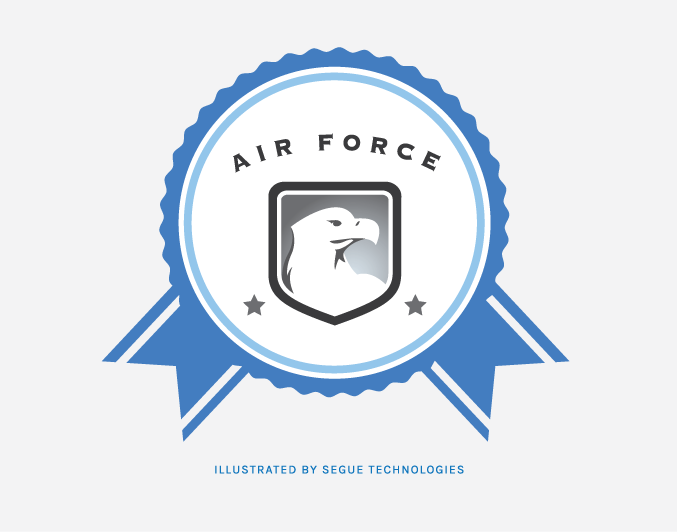The United States Air Force is well into their 2015 fiscal year and we are seeing a continued Information Technology focus on Cyber Security, Cost Reduction, Small Business Participation, Investment in ERPs and Leveraging ID/IQ Contract Vehicles. All behavior points to a continued emphasis on these areas for the foreseeable future.
Cyber Security
High on the United States list of major threats continues to be terrorism and offensive cyber activity. Often these threats are combined. To address this, our Department of Defense (DoD) continues to position itself to meet these challenges in a financially constrained environment, including looking for allocation of budget dollars that elevate our ability to defend our networks and project offensive operations. Contractors will need to be aware of this in all IT-related activities.
Cost Reduction
The Air Force, in particular, has realized significant reductions in spending through force reduction, consolidation of resources and aggressive acquisition strategies to drive down cost. This service continues to be very motivated by cost reduction and the expectation is that we will see more of the same in the coming years. However, the Air Force may need to be more creative in how it achieves this, as much of the low hanging fruit has been realized.
LPTA procurements are seen as a primary tool to reduce costs during recompetes. While we think the focus has generally been more on price competition that drive to the lowest denominator, recent indications from AF contracting seems to be an increased focus on strong technical bars for these competitions. The hope is that this will result in a more long term effective solution rather than just a short term expenditure reduction.
Small Business Participation
Over the last few years the Air Force has continued to increase its emphasis on small business participation. Strategic partnerships between large and small businesses, with the small business as the prime, will continue to be important. Recent historical information points to decreases in large company IT contract revenue. While many small businesses have the technical capability to perform per customer requirements, large businesses are invaluable partners for their ability to provide resources in staff, facilities, and experience.
Investment in ERPs
Within its massive portfolio of IT programs, it appears that the Air Force will continue to invest in modernization through implementing enterprise systems, with ongoing work for the Defense Enterprise Accounting and Management System (DEAMS) and the Air Force – Integrated Personnel and Pay System (AF-IPPS) and new solicitations pending for logistics efforts like Maintenance Repair & Overhaul (MROi) and Project Lifecycle Management (PLMi). In the meantime, most of the hundreds of legacy systems will continue with bare bones sustainment efforts and minor enhancements as funds are redirected toward these enterprise efforts.
Leveraging Contract Vehicles
The Air Force continues to consolidate IT work on large ID/IQs (Indefinite Delivery, Indefinite Quantity Contracts) and Government Wide Acquisition Contracts (GWACs) like NETCENTS-2 and GSA Oasis ePASS. Using these helps to simplify solicitation requirements to speed up procurement activities and provides the government with better visibility on spending. Outside of these vehicles, the AF is using 8a directed awards and- more rarely- open competition via GSA IT 70. Contractors that are not primes on these large vehicles should look to team with the small prime contractors and be an effective subcontractor partner.
Budget pressure continues to drive down contractor cost and margins. If your company is seeking higher profit growth targets for IT in the Air Force, look to pursuits related to Cyber and Intel. The Air Force remains committed to its large ERP efforts. It’s a good time to be a small business; look for opportunities to prime as a small or sub as a large. To that end, look for most of the work to be released on ID/IQs.
